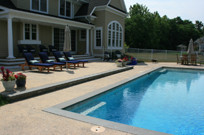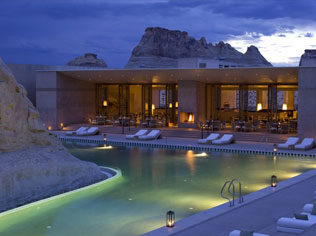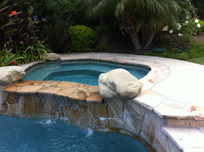Pools & Spas
Putting a residential pool project out for bid can be a perilous undertaking for a property owner – especially when the home in question is new and architects or custom-home builders are involved in the process. Quite often, the architect or home builder will reach out to a local volume builder who, for free, will come in and provide a quote based on
What are the issues that need to be considered in designing a new swimming pool? In two previous installments in this series, we first focused on the information-gathering process, and then on budgeting and setting expectations. In this third and final chapter, we’ll roll through what’s involved in
Up until 64 years ago, swimming pools had a lot in common with Henry Ford’s early cars: Just as you could get a Model A in any color so long as it was black, you could get a swimming pool of any size or shape so long as it was rectangular. Renowned landscape architect Thomas Church changed all that in 1948 with the kidney-shaped Donnell pool – and has left succeeding generations of watershape designers to face the challenge of helping their clients find the right-shaped pool for their given settings. Church was blessed with an open-minded California client who wanted a “pool as art,” with the practicalities of swimming treated as a secondary consideration. And Church delivered, big time: The pool’s flowing form was inspired by
Almost every advertisement for watershapes I’ve ever seen in a newspaper or the Yellow Pages says something about “custom” this or “custom” that. It always leads me to wonder how to differentiate between the “custom,” “high-end” and “luxury” pools others devise and the “architectural pools” or, better yet, the “aquatic art” I strive to create. I prefer the last two terms because
In my recent series on exterior design, I made only brief reference to the inclusion of pools and other aquatic features as part of outdoor compositions. I’ll make up for that now with a series of three features on approaching the design of watershapes. In most cases, a swimming pool is the biggest investment my clients will make in developing their exterior spaces. Indeed, the cost of the pool itself
Even these days, when new houses tend to be overly large and their lots tend to be quite small, it’s rare to encounter a situation in which there’s nothing in a backyard other than a basic patio. Indeed, there’s almost always something more to do in designing a backyard — and on many happy occasions, there’s actually a good deal to be done in integrating spaces beyond the patio into
In September 2001, the late Mark Urban wrote passionately about the value of making watershapes as energy efficient and resource conscious as they could possibly be. Ten years later, his words are as insightful as they ever were: Everyone is concerned these days about electricity, gasoline and natural gas and all other forms of energy. What is amazing is that, despite this surge in interest, very few people have considered
The beautiful pool shown above — at the five-star Amangiri resort in Canyon Point, Utah — is just one of 15 hotel swimming pools that made Budget Travel’s list: "World’s Most Amazing
Part of effective watershape construction involves the use of waterproofing agents to create barriers to water intrusion or to make concrete less permeable. But it’s also about
The following comes from the Web site The9Billion.com: The “+ Pool” (pronounced “Plus Pool” since it is shaped in the form of a plus sign) has been created by architect Dong-Ping Wong and designers Jeffrey Franklin and Archie Lee Coates IV. The 9,000-square- foot pool would be






















